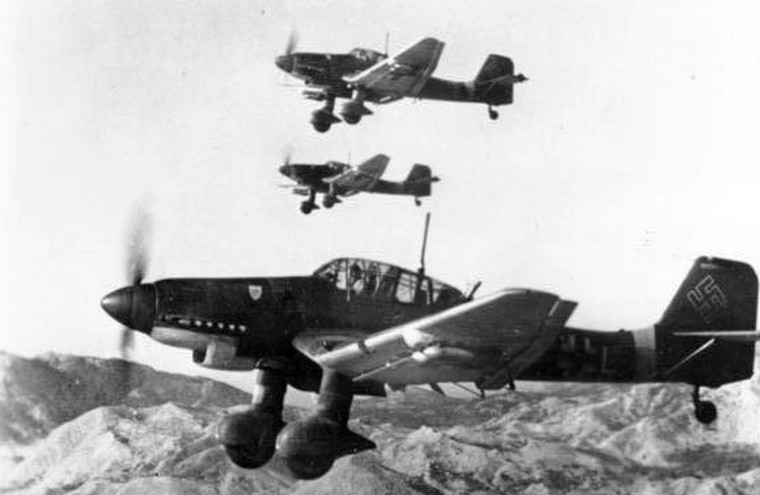A brief history of the first flight of the Junkers Ju 87
The Junkers Ju 87 or Stuka (from Sturzkampfflugzeug, "dive bomber") made its combat debut in 1937 with the Luftwaffe's Condor Legion during the Spanish Civil War and served the Axis forces in World War II.

The Stuka was sturdy, accurate, and very effective against ground targets Photo © Bundesarchiv/commons.wikimedia.org
The Stuka operated with considerable success in close air support and anti-shipping at the outbreak of World War II. It spearheaded the air assaults in the invasion of Poland in September 1939. Stukas were crucial in the rapid conquest of Norway, the Netherlands, Belgium and France in 1940.

The bombing run in of the Stuka. Photo © Aleksej fon Grozni / commons.wikimedia.org
Although sturdy, accurate and very effective against ground targets, the Stuka was vulnerable to contemporary fighter aircraft, like many other dive bombers of the war. During the Battle of Britain its lack of manoeuvrability, speed and defensive armament meant that it required a heavy fighter escort to operate effectively. After the Battle of Britain, the Stuka operated with further success in the Balkans Campaign, the African and Mediterranean theatres and the early stages of the Eastern Front where it was used for general ground support, as an effective specialized anti-tank aircraft and in an anti-shipping role. Once the Luftwaffe lost air superiority, the Stuka became an easy target for enemy fighter aircraft on all fronts.
It was produced until 1944 for lack of a better replacement. By the end of the war ground-attack versions of the Focke-Wulf Fw 190 had largely replaced the Stuka but it was used until the end.
An estimated 6,500 Ju 87s of all versions were built between 1936 and August 1944.
|
  |























